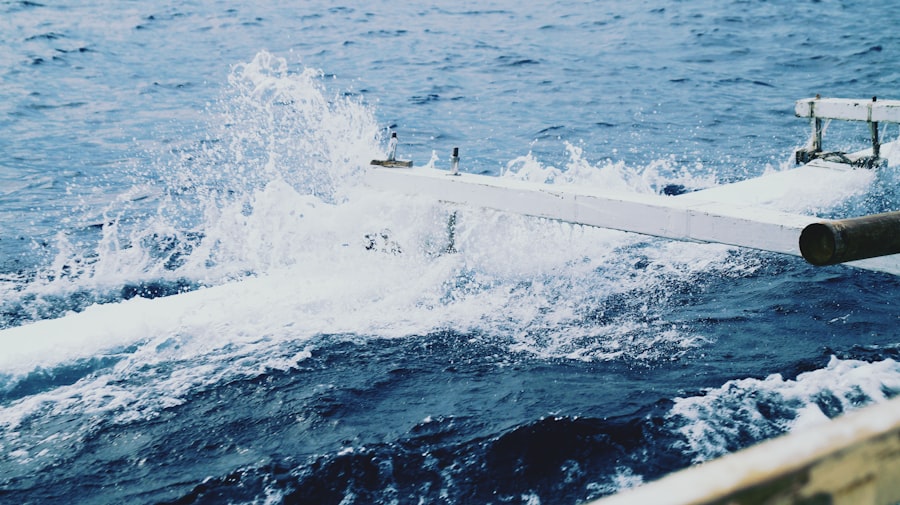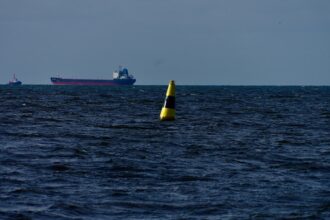The emergence of these weapons has reshaped the dynamics of international relations and military strategy. Their existence has led to a precarious balance of power, where nations must navigate the complexities of deterrence theory and the potential for catastrophic escalation. As global tensions rise and new actors enter the nuclear arena, understanding the roles and implications of nuclear torpedoes and ICBMs becomes increasingly critical for policymakers and military strategists alike.
As technology advanced, so did the capabilities of nuclear torpedoes. The Soviet Union developed its own variants, such as the VA-111 Shkval, which boasted remarkable speed and maneuverability. These advancements reflected a broader trend in military innovation, where nations sought to enhance their deterrent capabilities through increasingly sophisticated weaponry.
The deployment of nuclear torpedoes not only changed naval tactics but also raised ethical questions about their use in conflict, as their destructive potential could lead to catastrophic consequences.
Key Takeaways
- The nuclear torpedo and intercontinental ballistic missile (ICBM) play significant roles in modern warfare, with their destructive power and strategic implications.
- The history of nuclear torpedoes traces their development and use in naval warfare, showcasing their evolution and impact on military tactics.
- The origins and evolution of ICBMs as a means of delivering nuclear warheads highlight their role in shaping global military strategies.
- Nuclear torpedoes offer destructive power and strategic advantages in naval combat, making them a formidable weapon in modern warfare.
- ICBMs possess long range, high speed, and precision, making them a potent delivery system for nuclear warheads with far-reaching strategic implications.
History of ICBMs: The origins of intercontinental ballistic missiles can be traced back to World War II, when advancements in rocketry laid the groundwork for future developments. The V-2 rocket, developed by German engineers, demonstrated the feasibility of long-range missile technology. However, it was during the Cold War that ICBMs emerged as a cornerstone of nuclear strategy.
The United States and the Soviet Union invested heavily in missile technology, leading to the successful launch of the first ICBMs in the late 1950s.
The evolution of ICBMs has been marked by significant milestones, including improvements in range, accuracy, and payload capacity. Early models were rudimentary by today’s standards, but subsequent generations saw the introduction of multiple independently targetable reentry vehicles (MIRVs), allowing a single missile to carry multiple warheads aimed at different targets. This capability not only increased the destructive potential of ICBMs but also complicated defense strategies for adversaries.
As nations continued to refine their missile technology, ICBMs became central to deterrence strategies, embodying the principle of mutually assured destruction that characterized Cold War geopolitics.
Capabilities of Nuclear Torpedoes: The destructive power of nuclear torpedoes is formidable, with their ability to unleash catastrophic damage on naval vessels and coastal installations. When launched from submarines, these weapons can approach targets undetected, utilizing stealth technology to evade radar and sonar systems. This capability allows for surprise attacks that can cripple enemy fleets before they have a chance to respond.
The strategic advantage lies not only in their destructive potential but also in their ability to operate in contested environments where surface ships may be vulnerable.

Moreover, nuclear torpedoes can be deployed in various scenarios beyond traditional naval engagements.
The psychological impact of possessing such weapons cannot be underestimated; adversaries must consider the possibility of sudden and overwhelming retaliation should they engage in hostilities.
This aspect reinforces the role of nuclear torpedoes as a critical component of modern naval strategy.
Capabilities of ICBMs: Intercontinental ballistic missiles are characterized by their impressive range, speed, and precision, making them one of the most effective delivery systems for nuclear warheads. Capable of traveling thousands of miles within minutes, ICBMs can strike targets across continents with remarkable accuracy. This capability is enhanced by advancements in guidance systems and propulsion technology, allowing for precise targeting even under challenging conditions.
| Capability | Description |
|---|---|
| Range | ICBMs have the capability to travel thousands of kilometers, allowing them to reach targets across continents. |
| Speed | ICBMs travel at hypersonic speeds, reaching velocities of over 15,000 miles per hour, making them difficult to intercept. |
| Precision | ICBMs are equipped with advanced guidance systems that enable them to accurately hit specific targets, increasing their effectiveness as delivery systems for nuclear warheads. |
The speed at which ICBMs can reach their targets is particularly significant in a world where time is often a critical factor in military decision-making. With flight times measured in mere minutes, nations must respond quickly to potential threats, raising the stakes in any conflict involving these weapons. Additionally, modern ICBMs are often equipped with countermeasures designed to evade missile defense systems, further complicating efforts to intercept them.
This combination of range, speed, and precision solidifies ICBMs as a cornerstone of national defense strategies for nuclear-armed states.
Strategic Implications: The potential impact of using nuclear torpedoes and ICBMs in military scenarios is profound and multifaceted. In a conventional conflict scenario, the deployment of either weapon could escalate tensions rapidly, leading to catastrophic consequences. The use of nuclear torpedoes could shift naval engagements dramatically, allowing for surprise attacks that could decimate enemy fleets before they have a chance to retaliate.
Conversely, the launch of an ICBM could trigger an immediate response from adversaries, potentially leading to full-scale nuclear war.
Moreover, these weapons play a crucial role in deterrence strategies. The mere possession of nuclear torpedoes and ICBMs can dissuade adversaries from engaging in aggressive actions due to the fear of overwhelming retaliation. This dynamic creates a delicate balance where nations must carefully consider their military postures and diplomatic strategies to avoid miscalculations that could lead to unintended escalation.
Technical Challenges: Developing and deploying nuclear torpedoes and ICBMs presents numerous engineering and logistical challenges that must be addressed to ensure their effectiveness and reliability. For nuclear torpedoes, challenges include creating propulsion systems that allow for high speeds while maintaining stealth capabilities. Additionally, ensuring that these weapons can operate effectively in various underwater environments requires advanced materials and design considerations.

ICBMs face their own set of technical hurdles, particularly concerning guidance systems and payload delivery mechanisms.
Furthermore, maintaining a reliable stockpile of these weapons requires extensive logistical support and regular testing to ensure operational readiness.
International Regulations: The legal and ethical considerations surrounding the use of nuclear torpedoes and ICBMs are complex and contentious. Various international treaties aim to regulate nuclear weapons proliferation and promote disarmament efforts. The Treaty on the Non-Proliferation of Nuclear Weapons (NPT) serves as a cornerstone for global efforts to prevent the spread of nuclear arms while encouraging disarmament among existing nuclear powers.
However, compliance with these treaties is often challenged by geopolitical tensions and national security concerns. Nations may justify their development or modernization of nuclear capabilities as necessary for deterrence or defense against perceived threats. This creates a paradox where efforts to maintain security can inadvertently contribute to an arms race, undermining global stability and increasing the risk of conflict.
Defense Mechanisms: In response to the threat posed by nuclear torpedoes and ICBMs, military forces have developed various defense mechanisms aimed at intercepting or mitigating potential attacks. For ICBMs, missile defense systems have been deployed by several nations to detect and intercept incoming missiles before they reach their targets. These systems utilize advanced radar technology and interceptor missiles designed to neutralize threats at various stages of flight.
Defending against nuclear torpedoes presents unique challenges due to their stealthy nature and underwater launch capabilities. Anti-submarine warfare (ASW) strategies have evolved to include advanced sonar systems and unmanned underwater vehicles capable of detecting submarines before they can launch an attack. However, given the inherent difficulties in tracking submerged vessels, ensuring effective defense against nuclear torpedoes remains a significant challenge for naval forces worldwide.
Future Developments: Speculating on future advancements in nuclear torpedo and ICBM technology reveals a landscape marked by rapid innovation and evolving threats. As nations continue to invest in research and development, new technologies may emerge that enhance the capabilities of these weapons further. For instance, advancements in artificial intelligence could lead to more sophisticated guidance systems for both nuclear torpedoes and ICBMs, improving accuracy while reducing response times.
Additionally, emerging technologies such as hypersonic glide vehicles may challenge existing missile defense systems by introducing new flight profiles that are difficult to intercept. As these developments unfold, nations will need to adapt their military strategies accordingly while navigating the complex web of international relations that governs nuclear weapons use.
In summary, the significance of nuclear torpedoes and intercontinental ballistic missiles in modern warfare is profound and multifaceted. Their development has shaped military strategies and international relations since their inception during the Cold War era. While both weapons offer distinct advantages in terms of destructive power and strategic deterrence capabilities, they also pose significant ethical dilemmas and technical challenges that must be addressed.
As global tensions continue to rise and new actors enter the nuclear arena, understanding the implications of these weapons becomes increasingly critical for policymakers and military strategists alike. The ongoing debate over their effectiveness underscores the need for continued dialogue on disarmament efforts and international regulations governing their use in warfare. Ultimately, navigating this complex landscape will require careful consideration of both technological advancements and geopolitical realities as nations strive for security in an uncertain world.
In the ongoing debate about the effectiveness of nuclear torpedoes versus intercontinental ballistic missiles (ICBMs), it’s essential to consider various strategic implications and technological advancements. For a deeper understanding of the nuances involved in this discussion, you can read a related article on the topic at In The War Room. This resource provides valuable insights into the capabilities and limitations of both weapon systems, helping to illuminate the complexities of modern warfare.
WATCH THIS! The Secret Russian Weapon That Terrifies NATO
FAQs
What is a nuclear torpedo?
A nuclear torpedo is a type of torpedo that is armed with a nuclear warhead. It is designed to be launched from a submarine and can deliver a devastating nuclear explosion to its target.
What is an ICBM?
An ICBM, or Intercontinental Ballistic Missile, is a long-range missile that is capable of delivering a nuclear warhead to targets thousands of kilometers away. It is typically launched from a stationary silo or mobile launcher.
What are the advantages of a nuclear torpedo?
A nuclear torpedo can be launched from a submarine, making it difficult for an enemy to detect and intercept. It can also be used to target enemy naval forces and coastal areas.
What are the advantages of an ICBM?
An ICBM has the ability to strike targets across the globe, making it a powerful deterrent against potential adversaries. It can also be launched from a relatively secure and well-defended location.
How do nuclear torpedoes and ICBMs differ in terms of delivery method?
Nuclear torpedoes are launched from submarines and are designed to target naval forces and coastal areas. ICBMs, on the other hand, are launched from stationary silos or mobile launchers and are capable of striking targets across the globe.
Which is more powerful, a nuclear torpedo or an ICBM?
Both nuclear torpedoes and ICBMs are capable of delivering devastating nuclear explosions. The power of each weapon depends on the size of the warhead and the accuracy of the delivery system.




